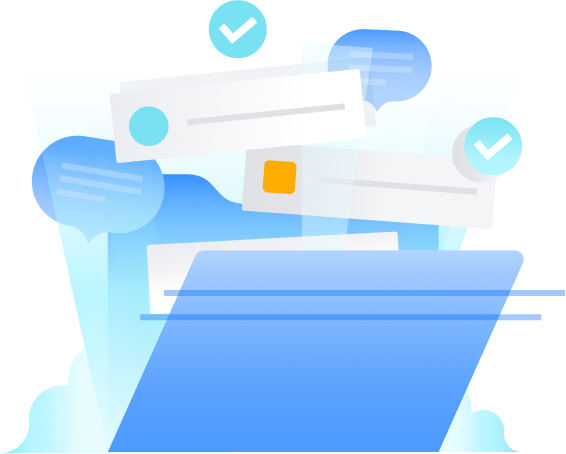3 Fehler bei der Teamzusammenarbeit, die dir nicht unterlaufen sollten
Themen durchsuchen
Du kannst dir das Erstellen eines Systems für die Teamzusammenarbeit vorstellen wie die Arbeit mit einer Töpferscheibe: Wenn du einfach einen Klumpen Ton auf die Scheibe wirfst und ihn schnell und ohne viel Nachdenken formst, entsteht wahrscheinlich irgendeine Art von Vase. Bei genauerem Hinsehen zeigen sich jedoch Mängel. Vielleicht sind Risse entstanden, durch die Wasser ausläuft. Dadurch hält die Vase nicht mehr stabil zusammen. Bei nächster Gelegenheit zerbricht sie und du musst deine Nachlässigkeit mit Scherben (und einem nassen Teppich) bezahlen.
Wenn du versuchst, auf die Schnelle ein System für die Zusammenarbeit im Team zusammenzustellen, unterlaufen dir wahrscheinlich typische Fehler. Die Konsequenzen daraus sind allerdings wesentlich teurer als ein misslungener Töpferversuch.
Hier stellen wir gängige Fehler bei der Teamzusammenarbeit vor und verraten dir, wie du sie vermeiden kannst, damit ein stabiles, auf Zusammenarbeit ausgelegtes Arbeitsumfeld entsteht.
Lösung: eine dynamische Wissensdatenbank

Durch eine zentrale Informationsquelle verhinderst du, dass deine Teammitglieder veraltete Informationen für ihre Arbeit nutzen oder Aufgaben doppelt erledigen. Zentralisiertes Wissen hält das gesamte Team auf demselben Stand, was jetzt besonders wichtig ist: 97 % der Mitarbeiter, die 2020 auf Arbeit im Homeoffice umstellen mussten, möchten auch in Zukunft zumindest zeitweise remote arbeiten. Unabhängig davon, ob dein Team vollständig remote, hybrid oder ausschließlich im Büro arbeitet: Die Zusammenarbeit im Team gestaltet sich mit einer zentralen Informationsquelle viel einfacher.
Reduziere Kontext- und Toolwechsel, indem du Confluence zum Dreh- und Angelpunkt für die gesamte Zusammenarbeit und den Wissensaustausch machst. Erstelle Bereiche, die mehrere Teams und Projekte umfassen und verwende Seiten, um Notizen zu organisieren. Wenn alles an einem gemeinsam genutzten Ort gebündelt ist, erledigt sich die Suche in unzähligen Datei- und E-Mail-Ordnern und es müssen keine Nachrichten mehr hin- und hergeschickt werden, um Informationen zu erhalten.
Lösung: vermehrte asynchrone Zusammenarbeit
Wir sagen nicht, dass du sämtliche Meetings absagen sollst. Wenn aber weniger Meetings stattfinden, bleiben mehr Zeit und geistige Kapazität für die Zusammenarbeit im Team übrig.
Beginne mit den regelmäßig stattfindenden Meetings. Hattest du schon einmal das Gefühl, ein Meeting hätte auch durch eine simple E-Mail ersetzt werden können? Genau in diesen Situationen bietet sich asynchrone Zusammenarbeit in Confluence als Alternative zum Meeting an. So werden alle Ideen, Diskussionen, Entscheidungen und wichtigen Notizen in einem gemeinsam genutzten Bereich gesammelt und die Teammitglieder können einen Beitrag leisten, wann immer sie Zeit haben.
Bevor du ein Meeting planst, verbinde die relevanten Teammitglieder auf Confluence-Seiten miteinander und verwende Inline-Änderungen und Kommentare, um das aktuelle Thema zu diskutieren. Gib dem Team Zeit, sich Gedanken zu machen und Beiträge zu durchdenken. Möglicherweise stellst du sogar fest, dass deine ruhigeren Teamkollegen unter diesen Voraussetzungen eher zur Zusammenarbeit bereit sind. Demetrius sagt, sie führe durch den Verzicht auf Meetings nun ergiebigere Gespräche mit selbstbewusster auftretenden Mitarbeitern.
Wenn ein Meeting unverzichtbar ist, teile ein bis zwei Tage zuvor eine kollaborative Agenda mit allen Eingeladenen. So haben die Teilnehmer Zeit, sich vorzubereiten, wodurch das eigentliche Meeting effizienter wird. Wenn du die Agenda in Confluence erstellst, kannst du die Vorteile der Bearbeitung in Echtzeit während des Meetings nutzen, um das Meeting auf Kurs zu halten.
Lösung: Projektverfolgung mit Tools für die Zusammenarbeit

Mikromanagement geschieht nicht immer absichtlich, hat aber in jedem Fall negative Konsequenzen. Wenn du mit Tools für die Zusammenarbeit deine Projekte und Aufgabenzuweisungen überwachst, bleibst du auf dem Laufenden, ohne deinen Teammitgliedern im Nacken zu sitzen.
Kehre immer wieder zu eurer zentralen Informationsquelle zurück. Erkläre deinen Mitarbeitern, dass die Teamzusammenarbeit in Confluence erfolgt, damit du den Fortschritt anhand von Neuerungen auf der Confluence-Seite verfolgen kannst, statt die Mitarbeiter persönlich anzusprechen oder ihnen eine Nachricht zu senden, was ihren Arbeitsfluss unterbricht.
Bei Confluence sind Benachrichtigungen, Ankündigungen und aktive Notizen direkt im Feed auf der Startseite zu finden. Wenn du das nächste Mal versucht bist, Mikromanagement auszuüben, öffne stattdessen Confluence und scrolle durch deinen Feed. Du kannst dir auch den Versionsverlauf von Dokumenten, Besprechungsnotizen und Kommentare ansehen, um mehr Kontext zu erhalten. Wenn du deine Mitarbeiter dazu ermutigst, Confluence als zentralen Punkt für die Teamzusammenarbeit zu nutzen, können alle (auch du) problemlos eigenständig arbeiten.